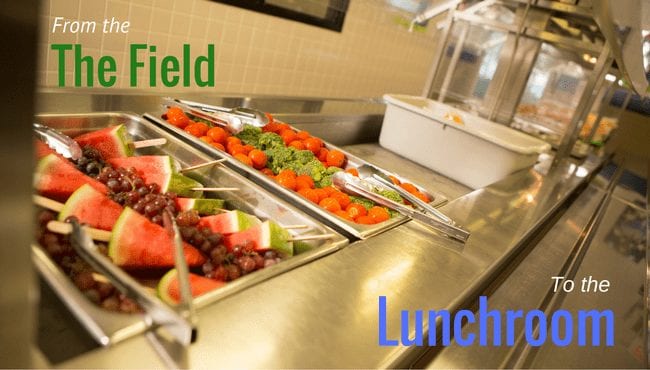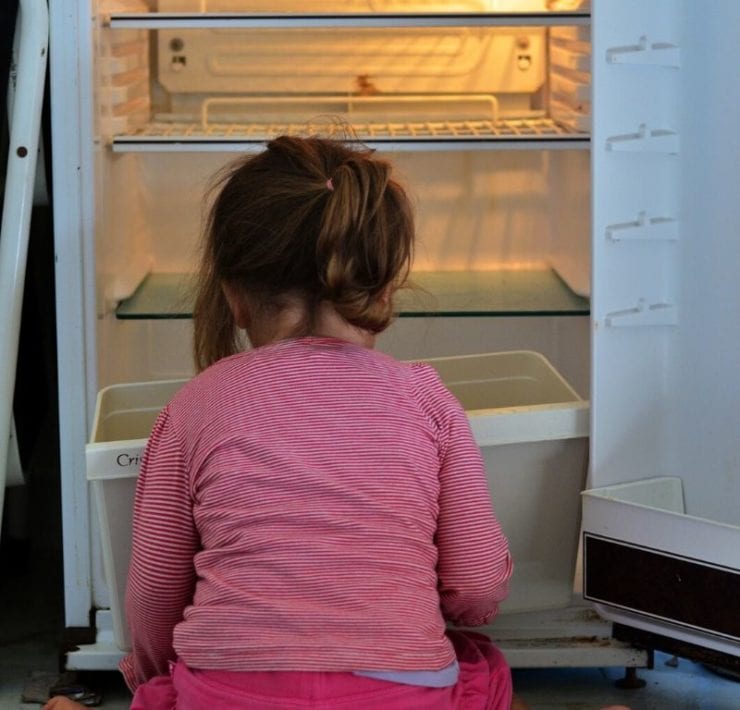Farm Food Collaborative in Madison County

In today’s world of mystery-meat nuggets and Uncrustables pre-assembled PB&Js, it’s easy for kids’ lunches to fall short of nutritional ideals and picture-perfect Pinterest recipes. School lunches often get a bad rap for being unhealthy or unappetizing. But the truth is, for many children in our community, what gets served in the cafeteria is their only reliable meal each day.
Nearly one in four children in North Alabama lives in a food-insecure household. Food insecurity can have severe effects on children’s physical and cognitive development, exposing them to the risk of stunted growth and diet-related disease, and putting them at a tremendous disadvantage in the classroom. Meals served in school cafeterias play an important role in minimizing the impact of nutritional deficit.

Local school systems and the Food Bank of North Alabama’s Farm Food Collaborative project are teaming up to fight hunger and diet-related diseases, making sure that public school students get some of the freshest, healthiest produce available.
The Farm Food Collaborative connects local family farmers to schools and other local institutional buyers. As active participants in the Collaborative, Madison County, Madison City, and Huntsville City schools are pioneers in the state’s Farm to School movement, serving fresh fruits and vegetables grown by local farmers within the Collaborative.

Products served include sweet potatoes, apples, pumpkins—and this year for the first time—strawberries and peaches. Local foods are often more nutritious, safer, and keep food dollars in our local economy. This is a great real-life example of “thinking win-win” and “synergizing”—two of the seven habits taught in the Leader in Me program implemented by several area schools!
The Alabama Department of Education also works with the Farm Food Collaborative program to help public schools statewide serve Alabama-grown produce. During the academic year, schools around the state receive fruits and vegetables through a program funded with federal dollars. Products featured in the 2016-2017 year include grape tomatoes from Steele, sweet potatoes and watermelons from Cullman, apples from Hazel Green, and satsumas from Grand Bay. In the 2015-2016 school year more than $1.6 million was spent on Alabama-grown produce for this program! The Farm Food Collaborative is working hard to identify new products and farms to help grow this program and keep even more food dollars local.

The Collaborative is also working with Madison County Schools, Madison City Schools, and Huntsville City School systems to raise awareness about locally grown foods and the farmers who grow them. Following their accounts on Facebook and Twitter will help keep you in the loop about when these fruits and vegetables might be served and give a little insight to the hard-working farmers who grew them.
[themify_box style=”light-blue rounded”] ABOUT THE AUTHOR: Janice F. Dyer is the Local Food Coordinator at the Farm Food Collaborative, a healthy food access and economic development project of the Food Bank of North Alabama. We are working on behalf of our members—farmers, buyers, and support agencies—to strengthen family farms, ensure a healthy population with easy access to healthy food choices, and build a strong, resilient local economy that keeps food dollars local. Learn more at www.foodbanknorthal.org.[/themify_box]
ABOUT THE AUTHOR: Janice F. Dyer is the Local Food Coordinator at the Farm Food Collaborative, a healthy food access and economic development project of the Food Bank of North Alabama. We are working on behalf of our members—farmers, buyers, and support agencies—to strengthen family farms, ensure a healthy population with easy access to healthy food choices, and build a strong, resilient local economy that keeps food dollars local. Learn more at www.foodbanknorthal.org.[/themify_box]
As a hyper-local website focused on all aspects of parenting in and around Morgan County, and the Tennessee Valley, River City Mom occasionally asks local parents to submit their stories for publication. This is part of our continual effort to represent varied viewpoints and experiences on our site. However, these articles should not be seen as necessarily expressing the views of Rocket City Mom Media Group, LLC.










